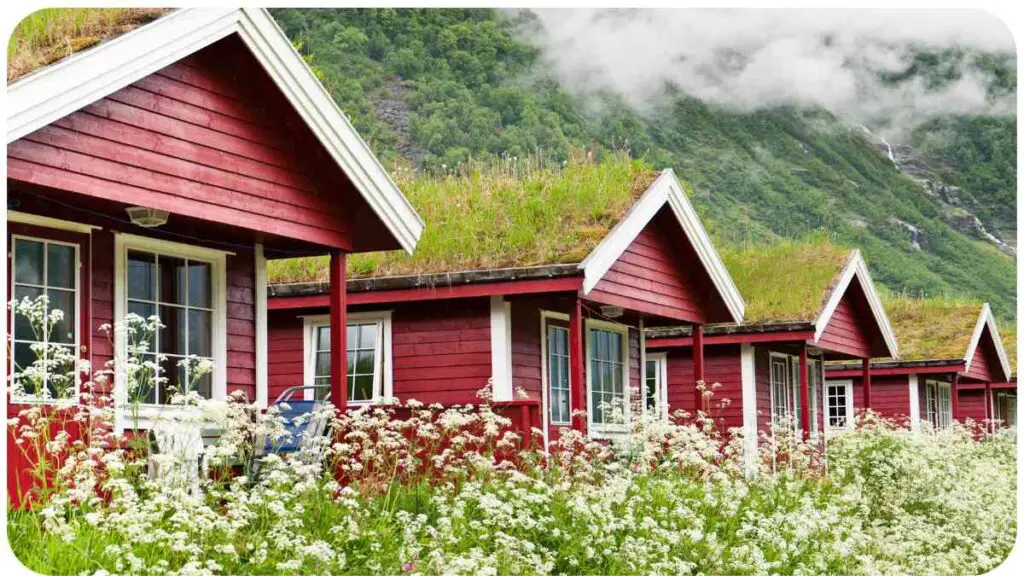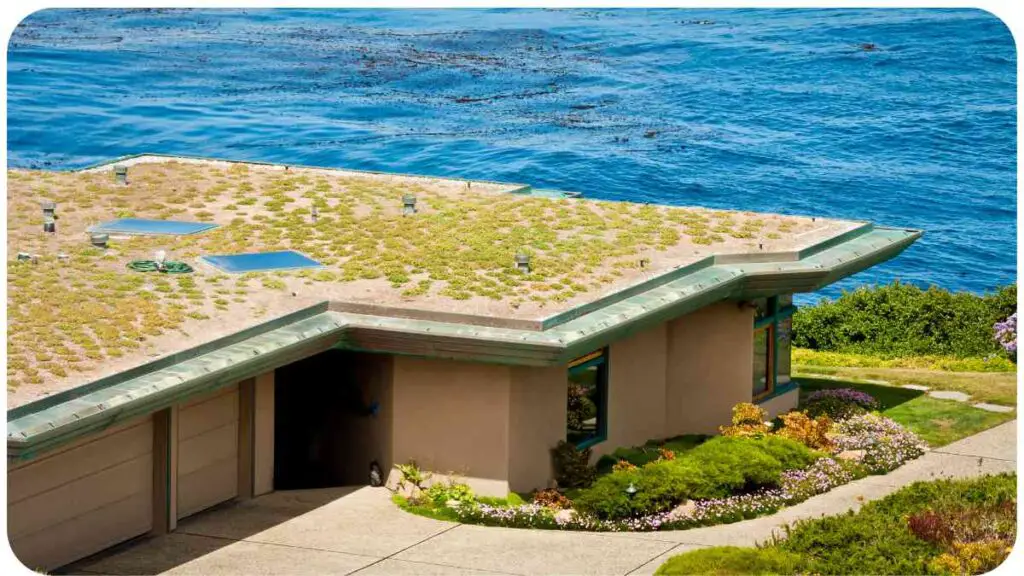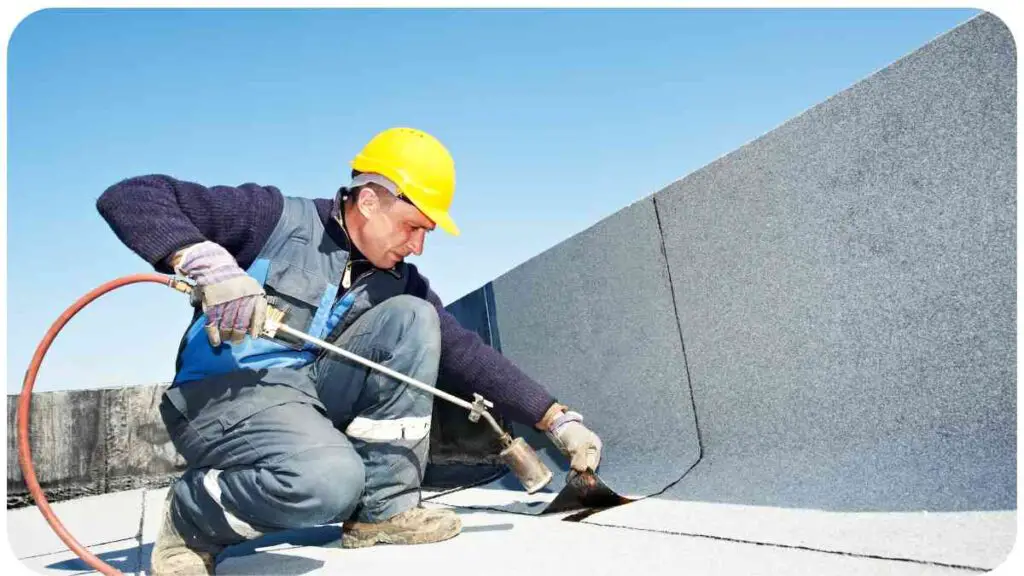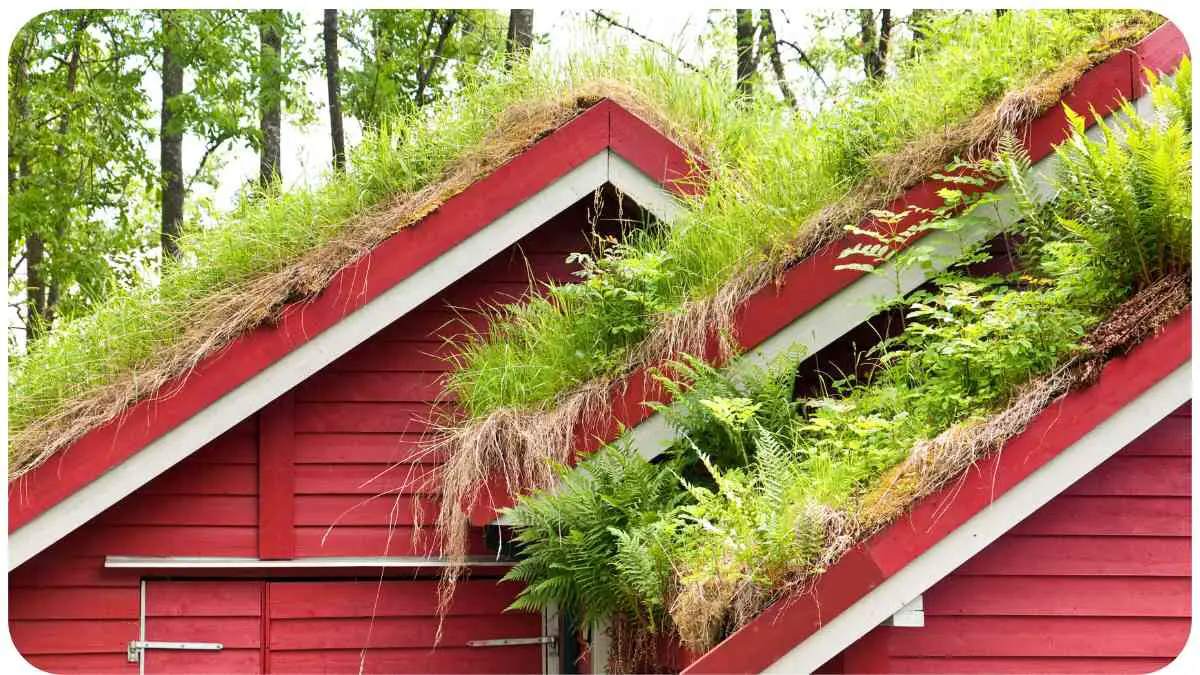Welcome to the world of green building and eco-friendly living roofs. In this article, we’ll explore the fascinating concept of green roofs and dive into the specifics of troubleshooting those pesky leaks. As a seasoned professional in the field of green building, I’ll be sharing my insights and practical tips to help you transform your rooftop oasis into a leak-free haven.
| Key Insights |
|---|
| 1. Green roofs offer numerous environmental benefits, including improved air quality and temperature regulation. |
| 2. Choosing the right type of green roof (extensive, intensive, or semi-intensive) is crucial for your specific needs and maintenance preferences. |
| 3. Common causes of leaks include poor waterproofing, inadequate drainage, and plant selection and maintenance issues. |
| 4. Diagnosing leaks involves visual inspections, water testing, and thermal imaging, each with its advantages and limitations. |
| 5. DIY troubleshooting tips include regular cleaning, repairing damaged waterproofing, and adjusting drainage systems to prevent leaks. |
| 6. Knowing when to seek professional help is vital to address complex issues and ensure the longevity of your green roof. |
| 7. Preventing future leaks requires proper installation, regular inspections, and choosing sustainable plant species. |
| 8. Real-world case studies highlight successful green roof transformations and their positive impacts. |
| 9. Green roofs contribute to urban biodiversity and have significant environmental benefits beyond aesthetics. |
| 10. Understanding and complying with regulatory considerations is essential when planning and maintaining green roofs. |
| 11. Budgeting for green roof maintenance is crucial to ensure long-term sustainability and cost-effectiveness. |
2. Understanding the Benefits of Green Roofs
Before we delve into troubleshooting, let’s take a moment to understand why green roofs are worth the effort. They aren’t just visually appealing; they offer numerous environmental benefits such as improved air quality, temperature regulation, and urban biodiversity.
Discover the advantages of green home decor and why it’s a smart choice for eco-conscious individuals. Embrace sustainable living today
3. Types of Green Roofs

Green roofs come in different flavors, each with its own unique characteristics. We’ll explore extensive, intensive, and semi-intensive green roofs to help you choose the right one for your needs.
3.1 Extensive Green Roofs
These low-maintenance green roofs are perfect for beginners and those looking for a hassle-free experience. They are lightweight and feature drought-resistant plants.
3.2 Intensive Green Roofs
If you dream of a lush rooftop garden with diverse plant life, intensive green roofs are your best bet. They require more maintenance but offer unparalleled aesthetics.
3.3 Semi-Intensive Green Roofs
Semi-intensive green roofs strike a balance between the extensive and intensive varieties. They offer a diverse plant palette with less maintenance than intensive roofs.
Table 1: Green Roof Types Comparison
| Type | Maintenance Level | Plant Diversity | Weight |
| Extensive Green | Low | Low | Lightweight |
| Intensive Green | High | High | Heavier |
| Semi-Intensive | Moderate | Moderate | Mid-range |
Now that you understand the types, let’s address the common culprit behind leaky living roofs.
4. Common Causes of Leaks in Living Roofs

4.1 Poor Waterproofing
One of the primary reasons for leaks is inadequate waterproofing. Without proper sealing, moisture can seep into your building, causing extensive damage.
Embark on a journey to a green and natural home with our comprehensive beginner’s guide. Transform your space sustainably
4.2 Inadequate Drainage
Improper drainage systems can lead to water pooling on your green roof, which eventually finds its way into your home. Ensuring proper slope and drainage is crucial.
4.3 Plant Selection and Maintenance
Choosing the wrong plants or neglecting maintenance can result in leaks. Plants with aggressive root systems can damage waterproofing membranes over time.
5. Diagnosing Roof Leaks
Now that we’ve identified the common causes, let’s discuss how to diagnose leaks in your living roof.
5.1 Visual Inspection
Start with a visual inspection of your green roof. Look for signs of ponding water, damaged plants, or cracks in the waterproofing.
5.2 Water Testing
Perform a water test by simulating rain on your roof. Observe how water flows and if there are any areas where it doesn’t drain correctly.
Planning your next trip? Explore ‘The Ultimate Guide to Sustainable Travel‘ for eco-friendly travel tips and responsible tourism.
5.3 Thermal Imaging
Consider using thermal imaging to detect temperature variations on your roof’s surface, which can indicate moisture intrusion.
Table 2: Diagnosing Roof Leaks Methods
| Method | Description | Advantages | Disadvantages |
| Visual Inspection | Visual examination for visible issues | Low cost, simple | Limited to surface |
| Water Testing | Simulating rain to check water flow | Accurate, identifies flow | Requires equipment |
| Thermal Imaging | Detecting temperature variations | Effective for hidden leaks | Specialized equipment |
6. DIY Troubleshooting Tips

6.1 Cleaning and Maintenance
Regular cleaning and maintenance can prevent leaks. Remove debris, trim overgrown plants, and inspect for damage.
6.2 Repairing Damaged Waterproofing
If you spot damaged waterproofing, repair it promptly. Seal cracks and replace damaged membranes to prevent further leaks.
Achieve organic gardening success with ‘The Ultimate Organic Gardening Guide.’ Grow your garden the green way.
6.3 Adjusting Drainage Systems
Improving drainage can be a DIY project. Ensure that water flows away from vulnerable areas of your roof.
CT – Table 3: DIY Troubleshooting Tips
| Tips | Description | Benefits |
| Cleaning and Maintenance | Regular upkeep and debris removal | Prevents clogs and damage |
| Repairing Damaged Waterproofing | Fixing cracks and tears in membranes | Stops water intrusion |
| Adjusting Drainage Systems | Improving water flow | Prevents pooling |
Now, let’s discuss when it’s time to bring in the professionals.
7. When to Seek Professional Help
While DIY efforts can solve many issues, there are situations where professional expertise is necessary. I’ll provide guidance on when it’s time to call in the experts.
8. Preventing Future Leaks
Prevention is always better than cure, and the same holds true for green roofs. Let’s explore how you can ensure your living roof remains leak-free in the long run.
8.1 Proper Installation
Starting with a solid foundation is key. Ensure that your green roof is installed correctly by experienced professionals who understand the nuances of waterproofing and drainage.
8.2 Regular Inspections
Regular inspections are crucial to catching and addressing potential issues early. Schedule annual or semi-annual inspections to keep your green roof in top shape.
Save energy and reduce costs with ‘Sustainable Living: How Smart Thermostats Can Reduce Energy Costs.’ Upgrade your home today.
8.3 Sustainable Plant Choices
When selecting plants for your living roof, choose species with non-invasive root systems and consider local climate conditions to minimize maintenance and potential damage.
Table 4: Preventing Future Leaks
| Prevention Method | Description | Benefits |
| Proper Installation | Experienced professionals for installation | Solid foundation |
| Regular Inspections | Scheduled check-ups for early issue detection | Timely problem resolution |
| Sustainable Plant Choices | Selecting appropriate plant species | Reduces maintenance and damage |
9. Success Stories: Real-World Examples
To inspire your green roof journey, let’s explore a couple of real-world success stories.
9.1 Case Study 1: Retrofitting a Green Roof
In this case study, we’ll discuss how a building owner successfully retrofitted a traditional roof into a green oasis, overcoming challenges and achieving an eco-friendly transformation.
9.2 Case Study 2: A Successful Living Roof Renovation
Learn about a commercial building that underwent a living roof renovation, resulting in improved aesthetics, energy efficiency, and a positive impact on the local environment.
10. The Environmental Impact
Beyond aesthetics and leak prevention, green roofs have a significant environmental impact. We’ll delve into how they contribute to sustainability and urban biodiversity.
11. Regulatory Considerations
Navigating the regulatory landscape is crucial when planning and maintaining your green roof. We’ll provide insights into the permits and regulations you might encounter.
12. Budgeting for Green Roof Maintenance
Maintaining a green roof involves costs, but the long-term benefits are well worth it. We’ll help you budget effectively for the upkeep of your green oasis.
13. Conclusion
In conclusion, troubleshooting leaky living roofs is a manageable task when armed with the right knowledge and resources. By understanding the types of green roofs, diagnosing issues, and implementing preventive measures, you can enjoy the benefits of a thriving, eco-friendly rooftop garden without the headache of leaks. Remember, regular maintenance and expert guidance are your allies in this green building journey. Here’s to a greener, more sustainable future!
14. Additional Resources
For further information and resources on green building and living roof maintenance, check out the following:
15. Glossary
- Extensive Green Roof: A low-maintenance green roof with drought-resistant plants.
- Intensive Green Roof: A high-maintenance green roof with diverse plant life.
- Semi-Intensive Green Roof: A balanced green roof with moderate maintenance needs.
- Waterproofing: The process of making a surface impervious to water.
- Drainage System: A system designed to remove excess water from an area.
- Thermal Imaging: A technology that detects variations in temperature to identify issues.
- Non-Invasive: Plant species with roots that do not cause damage.
- Urban Biodiversity: The variety of plant and animal species in urban areas.
- Permits and Regulations: Legal requirements for green roof installation and maintenance.
Now that you’ve got a comprehensive guide, it’s time to embark on your journey to troubleshoot and maintain your leak-free, thriving living roof. Happy green building!
Further Reading
Here are some additional resources to deepen your knowledge on green roof maintenance and related engineering considerations:
- Permagard Green Roof Maintenance Guide: Explore a comprehensive guide on maintaining green roofs, including essential tips and best practices.
- Fixfast: Commonly Overlooked Living Roof Engineering Issues: Learn about often-neglected engineering aspects of living roofs and how to address them to ensure structural integrity.
- Construction Canada: Waterproofing Considerations for Green Roofs: Dive into crucial waterproofing considerations specific to green roofs, helping you safeguard your building against leaks.
FAQs
How often should I inspect my green roof for maintenance?
Regular inspections are recommended, typically on an annual or semi-annual basis. Early detection of issues can prevent costly repairs.
What are some common signs of a leak in a living roof?
Look for ponding water, damp spots on interior ceilings, or visible damage to the green roof surface. These can be indicators of a leak.
Are there specific plants that are better suited for green roofs?
Yes, choosing drought-resistant and non-invasive plant species is advisable to minimize maintenance and potential damage to waterproofing.
Can I retrofit my existing roof into a green roof?
Yes, retrofitting is possible, but it requires careful planning, including structural assessments and waterproofing considerations.
Are there any financial incentives for installing green roofs?
Some cities offer incentives or rebates for green roof installations to promote sustainability and reduce urban heat islands. Check with local authorities for details.

I am Hellen, I’ve been passionate about sustainability for as long as I can remember. It’s something that my mom taught me from a young age, and it’s something that has shaped my life in so many ways.

